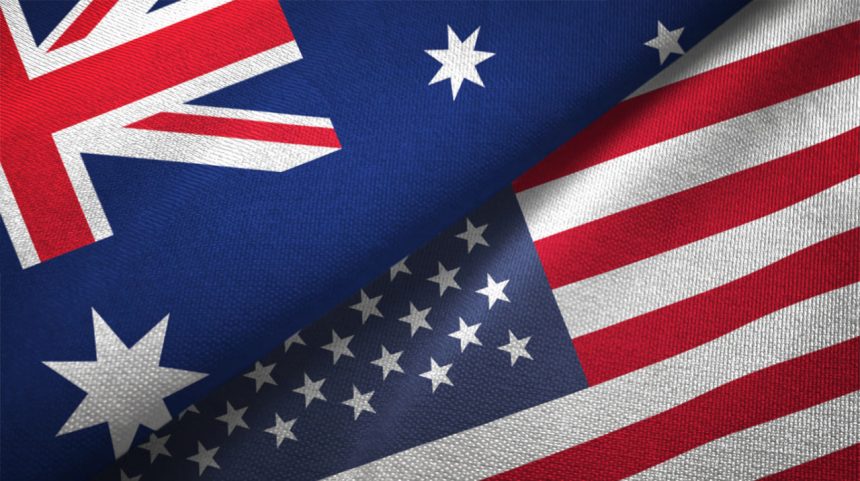In the shadow of Donald Trump’s return to the White House, global trade dynamics have once again shifted dramatically. While much attention has focused on high-profile disputes with China, Europe, and Canada, the US-Australia relationship—long characterized by strong alliances in defense and trade—has faced its own undercurrents of tension. As of August 2025, Australia has largely dodged the brunt of Trump’s sweeping tariff hikes, but the threat of escalation looms large, injecting uncertainty into bilateral economic ties. This article examines the origins of these tensions, Australia’s strategic maneuvering, and the broader implications for the Asia-Pacific region.
The Context: Trump’s Tariff Agenda and Australia’s Vulnerability
Trump’s second term began with a renewed emphasis on protectionism, aiming to reduce the US trade deficit and bolster domestic manufacturing. In January 2025, the administration announced baseline tariffs of 10% on most imports, with threats of increases up to 25% or more for non-compliant partners. Australia, a key US ally under the AUKUS pact and beneficiary of the 2005 US-Australia Free Trade Agreement (FTA), initially seemed insulated. However, the US trade deficit with Australia—driven by exports like beef, wine, and minerals—reached $28 billion in 2024, making it a potential target.
By February, whispers of tariff hikes surfaced, with Trump criticizing “unfair” trade practices in sectors like steel and aluminum. Australian Prime Minister Anthony Albanese responded firmly, stating the tariffs were “unjustified” and that Canberra would not retaliate, prioritizing the alliance. Yet, the baseline 10% tariff on Australian goods entering the US persisted, raising costs for exporters and fueling domestic debates about economic sovereignty.
Escalation Threats and Diplomatic Pushback
Tensions peaked in July 2025 when Trump floated ideas of raising the baseline tariff to 20-25% on partners not meeting “reciprocal” trade standards. Australian Trade Minister Don Farrell heralded the FTA as a shield, but analysts warned of ripple effects. A report from the Center for Strategic and International Studies (CSIS) highlighted how tariffs could reshape Australia’s strategic outlook, potentially pushing it closer to China amid AUKUS commitments.
The practical impacts were immediate. In August, Australia Post suspended most parcel deliveries to the US, citing tariff-related disruptions and increased costs from Trump’s policies. Exporters in agriculture and resources—Australia’s backbone—faced higher barriers, with beef shipments potentially hit hardest. Trump’s executive order on July 31 imposed new tariffs on dozens of countries, but Australia avoided an immediate hike, thanks to intense lobbying and concessions on defense spending and critical minerals.
Despite this, the Australian Broadcasting Corporation (ABC) described Trump’s tariff ideas as a “threat or thought bubble” that spells trouble, estimating potential losses of billions if fully implemented. Canberra’s strategy has been diplomatic restraint: no retaliation, but quiet diversification of trade toward Asia and Europe to mitigate risks.
Economic Ripple Effects and Global Uncertainty
The tensions have broader ramifications. Trump’s tariffs are projected to cost US households an average of $2,400 in 2025, with disproportionate impacts on imported goods like Australian wine and apparel. For Australia, the Reserve Bank noted in its May 2025 report that US policy uncertainty contributed to moderate global growth, affecting commodity prices and export revenues.
CSIS analysis underscores Australia’s challenges: while the FTA provides leverage, reliance on the US market (20% of exports) exposes vulnerabilities. Tariffs could accelerate Australia’s pivot to Indo-Pacific partners, complicating AUKUS dynamics. Globally, CNBC reports that Trump’s actions rekindle trade tensions, fostering uncertainty in financial markets and supply chains.
The Current Status: Averted Crisis, But Lingering Risks
As of August 26, 2025, Australia remains exempt from major tariff escalations, with goods continuing under the 10% baseline. Trump’s July order spared close allies like Australia for now, but includes review clauses that could trigger hikes if deficits persist. Albanese’s government views this as a diplomatic win, but experts warn of fragility—any shift in US policy could reignite tensions.
In conclusion, the US-Australia tariff saga highlights the tension between alliance loyalty and economic self-interest. While catastrophe has been averted, the episode serves as a cautionary tale of how protectionism can strain even the strongest partnerships. As both nations navigate 2025’s uncertainties, the focus shifts to diversification and dialogue to ensure mutual prosperity.










